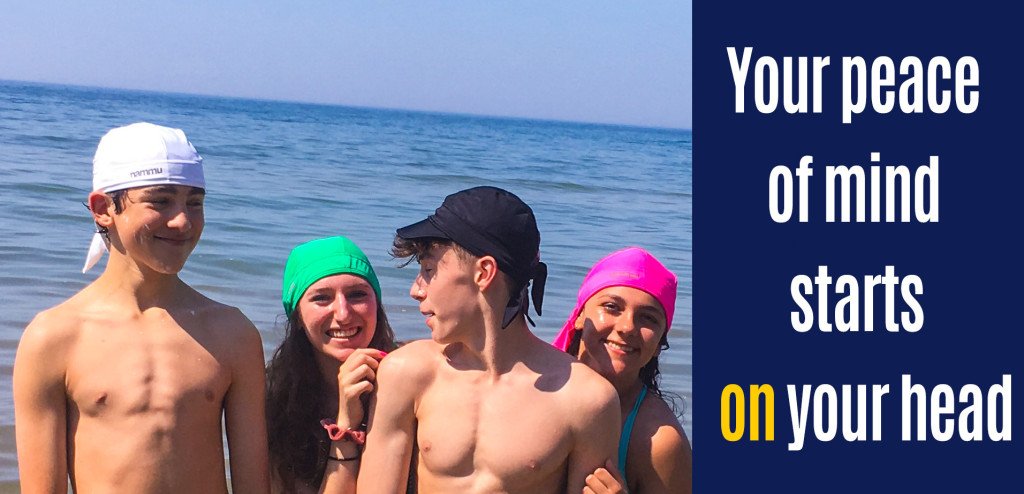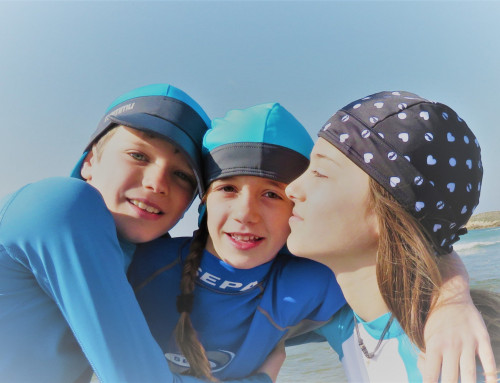
The sun is fun and good for us, but too much exposure is dangerous and can cause sunburn, skin aging, and cancer.
The Importance of Sun Protection and How Nammu Swimming Hats Help
The sun is fun and good for us, but too much exposure is dangerous and can cause sunburn, skin aging, and cancer. Harmful ultraviolet (UV) rays reflect off the water and light-colored surfaces like sand and concrete. Our bodies deplete their natural defense against UV rays throughout our lifetime, and they are irreplaceable.
The Hidden Dangers of UV Exposure in Water
UV rays are strong enough to penetrate the surface of the water and are effectively magnified. In shallow water, the rays can reflect off a sandy bottom. Being underwater can be deceptive due to the cooling effect of the water. Protecting skin as early as childhood can significantly reduce the risk of skin cancer and premature skin aging as an adult. Defending skin from the sun’s rays could prevent about 80% of skin cancers.

Facts About Sun Exposure
We all need some sun exposure; it’s our primary source of vitamin D, which helps us absorb calcium for stronger, healthier bones. But it doesn’t take much time in the sun for most people to get the vitamin D they need, and unprotected exposure to the sun’s ultraviolet rays can cause skin damage, eye damage, immune system suppression, and even cancer. Even people in their twenties can develop skin cancer.
Most kids rack up between 50% and 80% of their lifetime sun exposure before age 18, so it’s important that parents teach their children how to enjoy fun in the sun safely. With the right precautions, you can greatly reduce your child’s chance of developing skin cancer.
Understanding UV Rays
The sun radiates light to the earth, and part of that light consists of invisible ultraviolet (UV) rays. When these rays reach the skin, they cause tanning, burning, and other skin damage.
Sunlight contains three types of ultraviolet rays: UVA, UVB, and UVC.
- UVA rays cause skin aging and wrinkling and contribute to skin cancer, such as melanoma. Because UVA rays pass effortlessly through the ozone layer, they make up the majority of our sun exposure. Beware of tanning beds because they use UVA rays. A UVA tan does not help protect the skin from further sun damage; it merely produces color and a false sense of protection from the sun.
- UVB rays are also dangerous, causing sunburns, cataracts (clouding of the eye lens), and immune system damage. They also contribute to skin cancer. Melanoma, the most dangerous form of skin cancer, is thought to be associated with severe UVB sunburns that occur before the age of 20. Most UVB rays are absorbed by the ozone layer, but enough of these rays pass through to cause serious damage.
- UVC rays are the most dangerous, but fortunately, these rays are blocked by the ozone layer and don’t reach the earth. What’s important is to protect your family from exposure to UVA and UVB, the rays that cause skin damage.
The Effects of Long-Term UV Exposure
- Skin Cancer (Basal, Squamous, and Melanoma)
- Premature Aging
- Wrinkles
- Dark Patches (liver spots)
- Cataracts in the eyes
Sun Protection Factor (SPF)
Used primarily with sunscreen, SPF measures the length of time skin is protected against sunburn from UV-B rays compared to unprotected skin. SPF is accurate only with proper application and re-application of the sunscreen. Insufficient application quantity, activity, swimming, and other factors can impact the SPF of sunscreens.
Ultraviolet Protection Factor (UPF)
Ultraviolet Protection Factor (or UV Protection Factor) is similar to SPF (Sun Protection Factor). UV Protection Factor is applied to the fabric rather than sunscreen. The table below shows the relative UV Protection from various UPF ratings. Clothing possesses different UV Protection Factors. Therefore, certain clothing and the fabric used to make the clothing is better for sun protection from damaging UV rays.
Nammu Swim Hats: A Solution for UV Protection
Nammu Swimming Hats are designed to provide optimal UV protection for everyone, especially children who are more susceptible to UV damage. These hats offer a comfortable fit that stays secure during water activities, making them an essential part of your sun protection routine. By incorporating UV-protective fabrics, Nammu Hats ensures that both children and adults can enjoy their time in the water safely.


